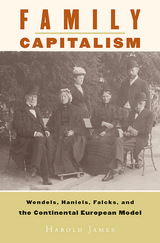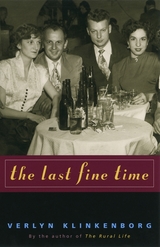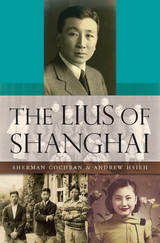
This history of three powerful family firms located in different European countries takes place over a period of more than two hundred years. The interplay and the changing social and legal arrangements of the families shaped the development of a European capitalism quite different from the Anglo-American variety.
Qualifying claims by Alfred Chandler and David Landes that family firms tend to be dysfunctional, Harold James shows how and why these steel and engineering firms were successful over long periods of time. Indeed, he sees the family enterprise as particularly conducive to managing risk during periods of upheaval and uncertainty when both states and markets are disturbed. He also identifies the key roles played by women executives during such times.
In Family Capitalism, James tells how "iron masters" of a classical industrial cast were succeeded by new generations who wanted to shift to information-age systems technologies, and how families and firms wrestled with social and economic changes that occasionally tore them apart. Finally, the author shows how the trajectories of the firms were influenced by political, military, economic, and social events and how these firms illuminate a European model of "relationship capitalism."



From the Sino-Japanese War to the Communist Revolution, the onrushing narrative of modern China can drown out the stories of the people who lived it. Yet a remarkable cache of letters from one of China’s most prominent and influential families, the Lius of Shanghai, sheds new light on this tumultuous era. Sherman Cochran and Andrew Hsieh take us inside the Lius’ world to explore how the family laid the foundation for a business dynasty before the war and then confronted the challenges of war, civil unrest, and social upheaval.
Cochran and Hsieh gained access to a rare collection containing a lifetime of letters exchanged by the patriarch, Liu Hongsheng, his wife, Ye Suzhen, and their twelve children. Their correspondence offers a fascinating look at how a powerful family navigated the treacherous politics of the period. They discuss sensitive issues—should the family collaborate with the Japanese occupiers? should it flee after the communist takeover?—as well as intimate domestic matters like marital infidelity. They also describe the agonies of wartime separation, protracted battles for control of the family firm, and the parents’ struggle to maintain authority in the face of swiftly changing values.
Through it all, the distinctive voices of the Lius shine through. Cochran and Hsieh’s engaging prose reveals how each member of the family felt the ties that bound them together. More than simply a portrait of a memorable family, The Lius of Shanghai tells the saga of modern China from the inside out.
READERS
Browse our collection.
PUBLISHERS
See BiblioVault's publisher services.
STUDENT SERVICES
Files for college accessibility offices.
UChicago Accessibility Resources
home | accessibility | search | about | contact us
BiblioVault ® 2001 - 2024
The University of Chicago Press









